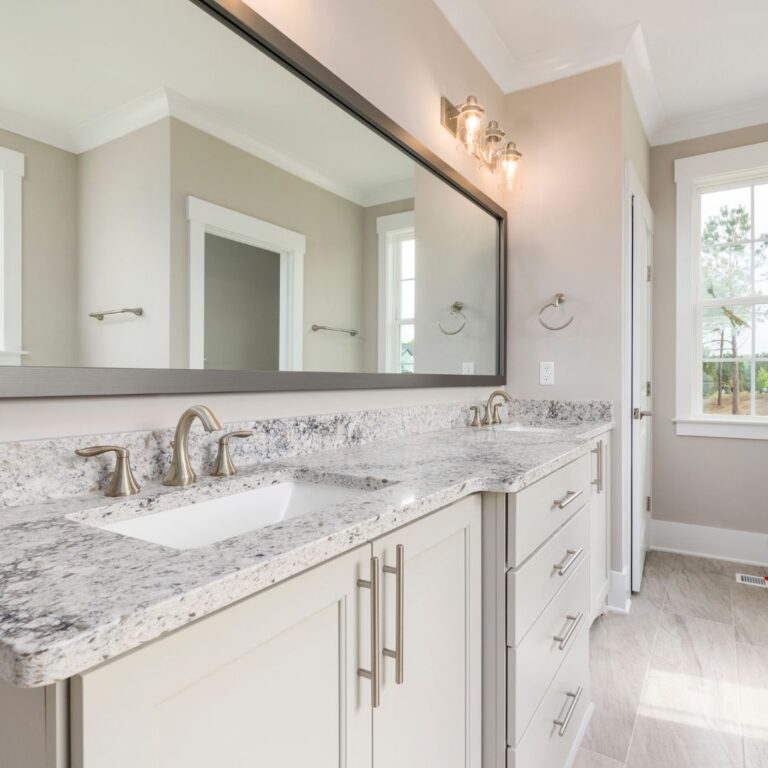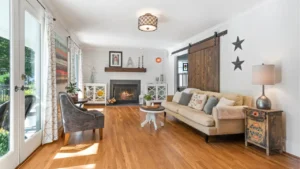Indian interior design is a harmonious blend of tradition, culture, and modern aesthetics. It captures the essence of India’s rich heritage while accommodating contemporary needs and preferences. Simple Indian house interior design focuses on creating functional, comfortable, and aesthetically pleasing spaces. This comprehensive guide explores various elements and tips for achieving a simple yet elegant Indian house interior design.

Key Elements of Simple Indian House Interior Design
1. Colors and Textures
Indian homes traditionally feature a rich palette of colors and textures. However, for a simple interior design, it’s essential to strike a balance.
- Neutral Base: Start with a neutral base using colors like beige, cream, or light grey. These colors create a serene and spacious look.
- Accent Colors: Introduce accent colors through furnishings, accessories, or a feature wall. Deep reds, earthy browns, and vibrant oranges can add warmth and character without overwhelming the space.
- Textures: Incorporate textures through fabrics, rugs, and wall treatments. Handwoven textiles, silk cushions, and jute rugs can enhance the tactile appeal.
2. Furniture
Furniture in a simple Indian house interior design should be functional, comfortable, and stylish.
- Wooden Furniture: Opt for wooden furniture with clean lines and minimal ornamentation. Teak, sheesham, and mango wood are popular choices.
- Multifunctional Pieces: Use multifunctional furniture like sofa-cum-beds, storage ottomans, and nested tables to save space and add versatility.
- Traditional Touch: Incorporate traditional pieces like jharokhas (window frames), chests, or a charpai (woven bed) to infuse cultural elements.
3. Flooring
Flooring plays a crucial role in defining the overall look and feel of a home.
- Natural Stone: Marble, granite, and sandstone flooring exude elegance and are durable options for Indian homes.
- Tiles: Ceramic or vitrified tiles are practical and come in a variety of designs that can mimic natural stone or wood.
- Rugs and Carpets: Use dhurries or area rugs to add warmth and define different areas within a room.
4. Lighting
Lighting is key to creating the right ambiance in any home.
- Natural Light: Maximize natural light by using sheer curtains and placing mirrors strategically to reflect light.
- Ambient Lighting: Use ceiling lights, chandeliers, or pendant lights for overall illumination.
- Task Lighting: Incorporate task lighting like table lamps, floor lamps, and under-cabinet lights for specific tasks.
- Accent Lighting: Highlight artwork or architectural features with accent lighting to create focal points.
5. Decor and Accessories
Decorative elements and accessories add personality and style to a home.
- Artwork: Display traditional Indian artwork such as Madhubani paintings, Tanjore paintings, or contemporary art pieces.
- Cushions and Throws: Use colorful cushions and throws to add comfort and visual interest.
- Plants: Incorporate indoor plants to bring in a touch of nature and improve air quality.
- Artifacts: Decorate with artifacts like brass lamps, terracotta figurines, and hand-painted pottery.
Room-by-Room Design Tips
Living Room
The living room is the heart of the home, where family and guests gather.
- Seating Arrangement: Arrange seating to encourage conversation. A combination of sofas, armchairs, and floor seating can create a cozy atmosphere.
- Feature Wall: Create a feature wall using textured paint, wallpaper, or a collection of framed artworks.
- Coffee Table: Choose a coffee table with storage options to keep the space tidy.
Bedroom
A bedroom should be a peaceful retreat that promotes relaxation and rest.
- Bed: Opt for a comfortable bed with a simple headboard. Use quality bed linens in soothing colors.
- Wardrobe: Choose a functional wardrobe with adequate storage. Sliding doors can save space in smaller rooms.
- Personal Touches: Add personal touches like family photographs, a reading nook, or a prayer corner.
Kitchen
A simple and efficient kitchen design enhances functionality and ease of use.
- Layout: Plan the kitchen layout for optimal workflow. The L-shaped or U-shaped layouts are popular choices.
- Storage: Use modular cabinets and pull-out shelves to maximize storage.
- Countertops: Choose durable and easy-to-clean materials like granite or quartz for countertops.
Bathroom
A well-designed bathroom should be functional and easy to maintain.
- Tiles: Use ceramic or porcelain tiles for flooring and walls. Choose light colors to make the space appear larger.
- Fixtures: Install modern fixtures and fittings that are both stylish and efficient.
- Storage: Incorporate storage solutions like wall-mounted cabinets and under-sink storage to keep the space organized.
Dining Room
The dining room is a space for family meals and gatherings.
- Dining Table: Choose a dining table that suits the size of your family. A wooden table with simple chairs is a timeless choice.
- Lighting: Hang a pendant light or chandelier above the dining table to create a focal point.
- Accessories: Use table runners, placemats, and a centerpiece to enhance the dining experience.

Incorporating Modernity with Tradition
Modern Indian house interior design seamlessly blends traditional elements with contemporary aesthetics.
1. Minimalist Approach
Adopt a minimalist approach by reducing clutter and focusing on essential elements. This creates a clean and organized look.
- Clean Lines: Use furniture and decor with clean, straight lines. Avoid overly ornate pieces.
- Neutral Palette: Stick to a neutral color palette with pops of color for a sophisticated look.
2. Sustainable Choices
Opt for sustainable and eco-friendly materials and practices.
- Natural Materials: Use natural materials like wood, stone, and cotton.
- Eco-Friendly Products: Choose eco-friendly paints, energy-efficient lighting, and water-saving fixtures.
3. Technological Integration
Incorporate modern technology to enhance comfort and convenience.
- Smart Home Devices: Use smart home devices like automated lighting, thermostats, and security systems.
- Modern Appliances: Equip the kitchen and bathroom with modern appliances and fixtures.
Conclusion
Designing a simple Indian house interior involves balancing tradition with modernity, functionality with aesthetics. By focusing on essential elements like colors, furniture, lighting, and decor, you can create a space that is not only beautiful but also comfortable and practical. Whether you prefer a traditional look with modern touches or a contemporary style with traditional accents, the key is to create a harmonious and personalized living environment.
At UIInterior, we understand the nuances of Indian interior design and strive to create spaces that reflect our clients’ personalities and lifestyles. With our expertise and attention to detail, we can help you achieve the perfect balance in your home design. Embrace the charm of simple Indian house interior design and transform your living space into a haven of elegance and comfort.
